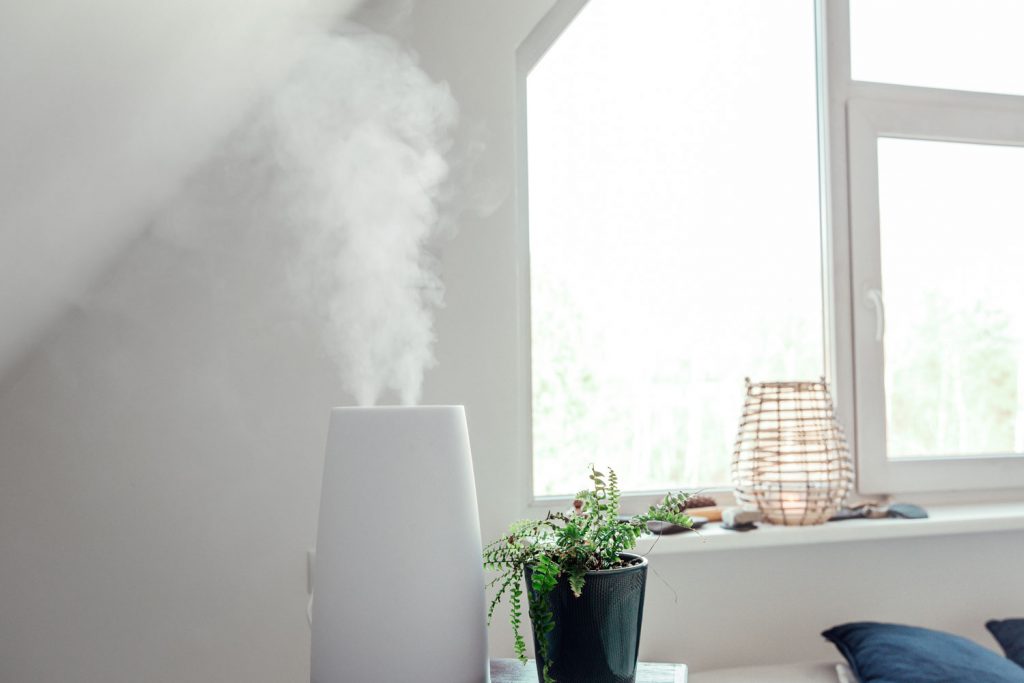It can be hard to keep your home at a comfortable humidity level during the winter months. Many people rely on a humidifier to make up for it. But many units are small - you can feel the moisture when you stand nearby, but what about the rest of the room? Can you use a fan simultaneously as a humidifier to help move that damp air? We've checked with air quality experts on everything you need to know about getting the most from your humidifier.
You can use a fan with a humidifier at the same time. However, there are some downsides to it. It will help circulate the damp air, but it will also encourage faster evaporation. There's no harm if you need it to keep the air comfortable. But if it's not necessary, turn the fan off - you're just making your humidifier work harder with no benefit in this case.
Keep reading, and we'll explain why a fan can help with humidity and why it's sometimes an obstacle. We'll also cover how often you should be using your humidifier. Perhaps more importantly, we'll cover when NOT to turn it on. And finally, we'll help you find the best spot in the room for your humidifier.
Does Having A Fan On Help With Humidity?
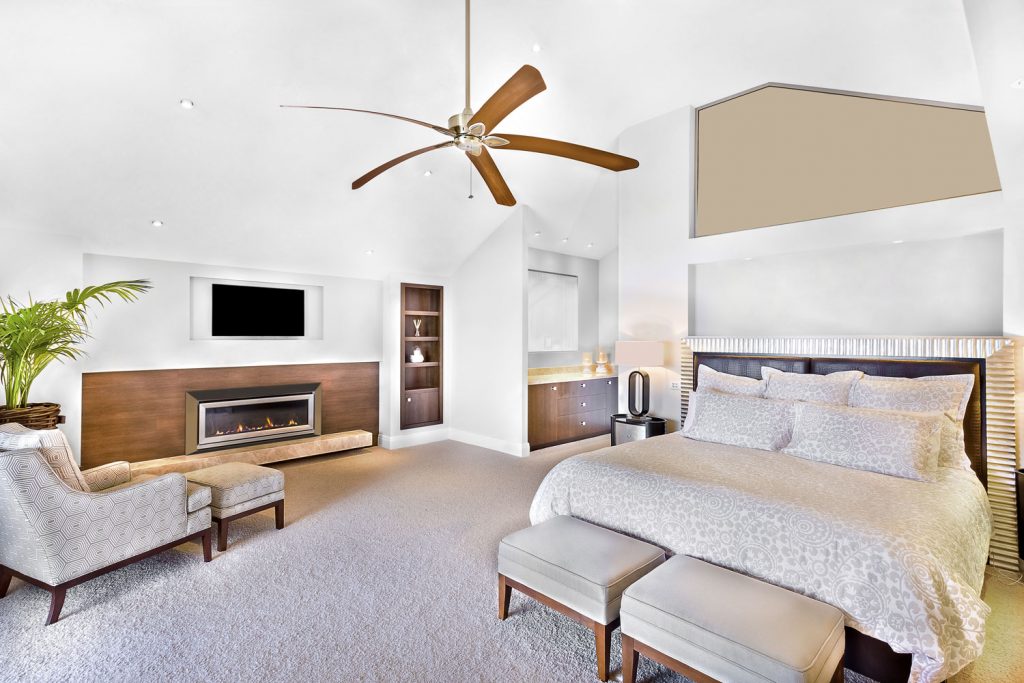
A ceiling fan creates a breeze that disperses excess moisture. This movement of moisture also encourages and speeds up its evaporation. It can help with poor air circulation, and damp air is trapped in certain pockets.
So, what does that mean if you're using a humidifier? A fan may or may not be useful. The fan will help move and disperse the damp air across the room - bonus! But it will also speed up the evaporation of some of that moisture you want. This just means that you'll need to run the humidifier more often to balance it out.
The fan speeds up evaporation, but it doesn't make the humidifier useless. You can still achieve the humidity levels that you want. If the fan isn't helping keep things comfortable, turn it off. But if you can't get the correct levels everywhere in the room, use a fan by all means. It will circulate the air and make it more consistent everywhere.
Is It Okay To Run A Humidifier All The Time?
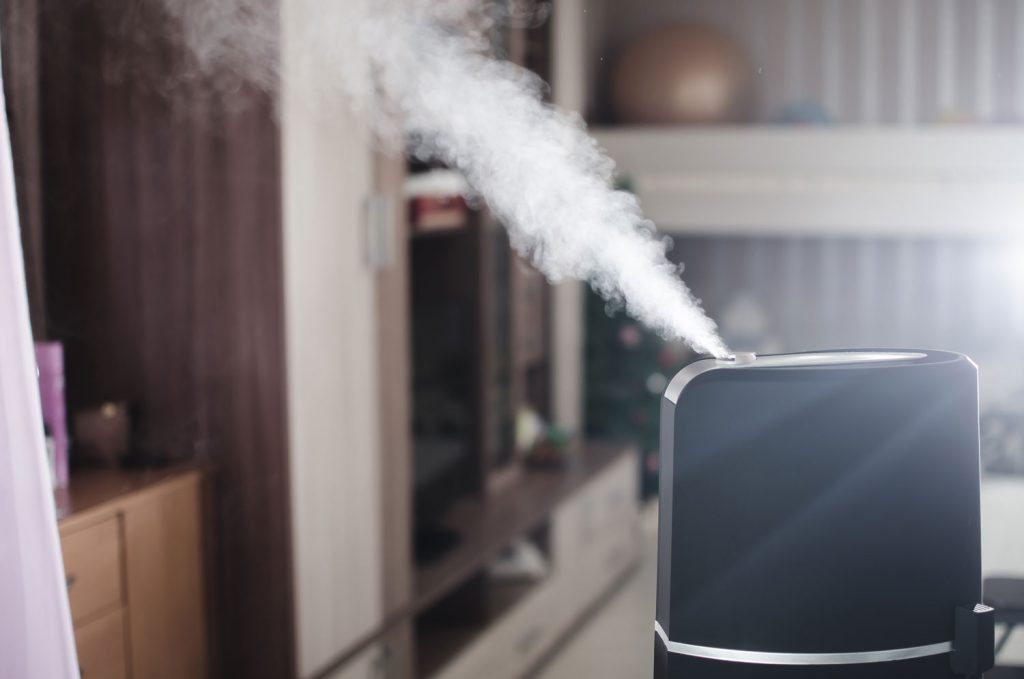
As long as you monitor the humidity levels, it's okay to run a humidifier all the time. There's no problem with running the humidifier. The problem only occurs when constant humidifier use pushes humidity levels into an unsafe zone.
Low humidity levels can cause dry skin. It can irritate your nose and aggravate allergies. It may also make you
more susceptible to germs and viruses. Plus, it's bad for things like wooden floors, paint, trim, and more.
When Should You Not Use A Humidifier?
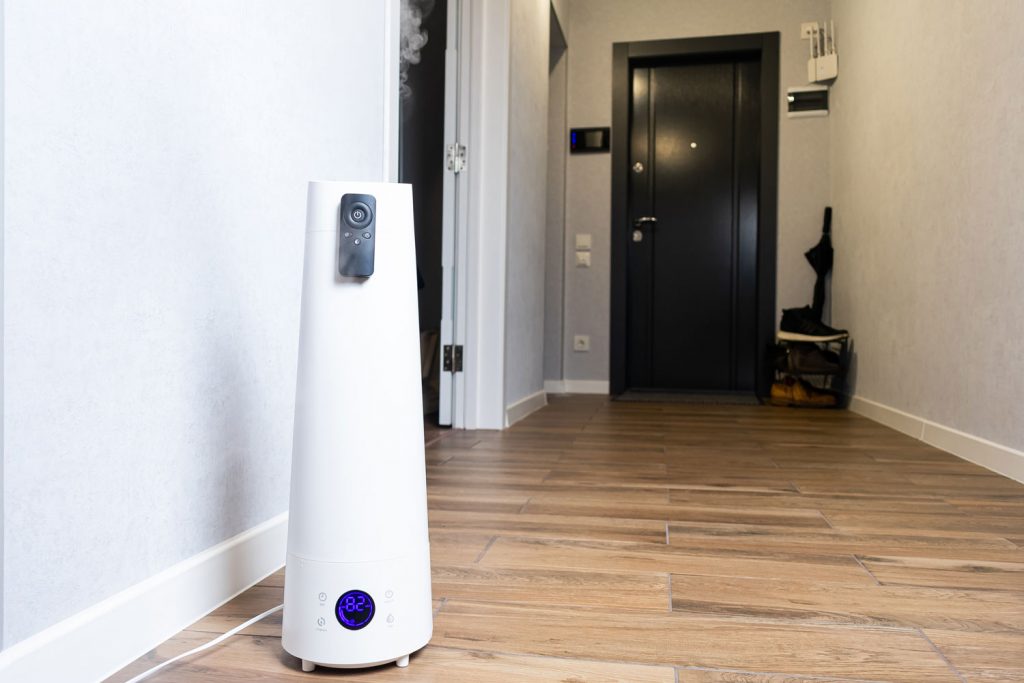
There's nothing wrong with using a humidifier all day if you have to. There may be times that you need it to keep your indoor humidity in the right "zone." But there are still some times to forgo the humidifier. These include:
When Humidity Is Already High
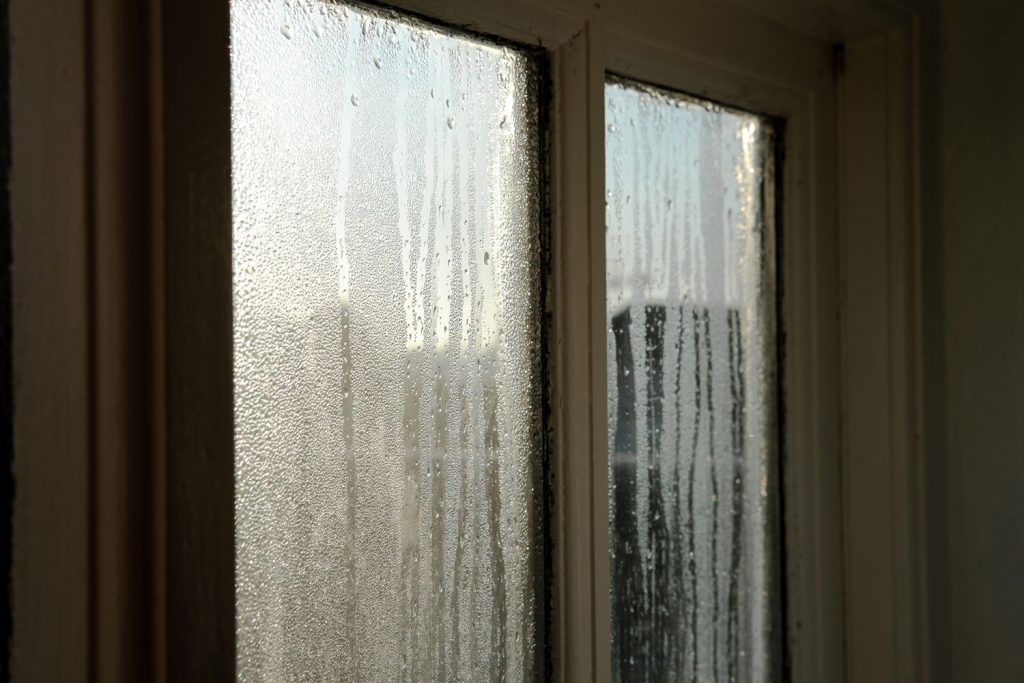
The ideal humidity is around 40-50%. But you should never use a humidifier when relative humidity is greater than 50%. Humidity above 60% can be dangerous. High humidity levels can be a problem for many reasons.
Too much humidity encourages the growth of mold and mildew. Viruses, bacteria, and even dust mites thrive in high humidity as well. Allergies can be affected. And you are at risk for respiratory problems or infections.
In addition, just like when levels are too low, high relative humidity can damage the home itself. Excess moisture causes rot to wood, drywall, and other materials. Joints and trim might swell. The floor can buckle. The paint might discolor or peel.
When You Don't Have The Right Water
Most manufacturers recommend using distilled or purified water in their machines. Tap water contains minerals that vary depending on where you live. These minerals might be too excessive for the machine to use safely. For this reason, most user guides specifically state not to use tap water in a humidifier.
When the water turns to steam, these minerals will do one of two things. They can form scaly deposits in the humidifier. Or, they might be dispersed into the air and inhaled. If it builds up in the machine, this causes problems with keeping the humidifier clean (and an unclean humidifier is yet another health hazard). If the minerals are released into the air, they can build up on surfaces and materials.
When Your Humidifier Needs To Be Cleaned
A humidifier works by releasing water into the air. This steam helps to improve the moisture level. But if that water is dirty, you're not exactly improving the air quality.
It's vital to keep your humidifier clean and in top shape. Otherwise, you probably won't see any benefits from using it. A dirty humidifier might spread mold spores, bacteria, mineral deposits, or other toxins.
Where Should A Humidifier Be Placed In A Room?
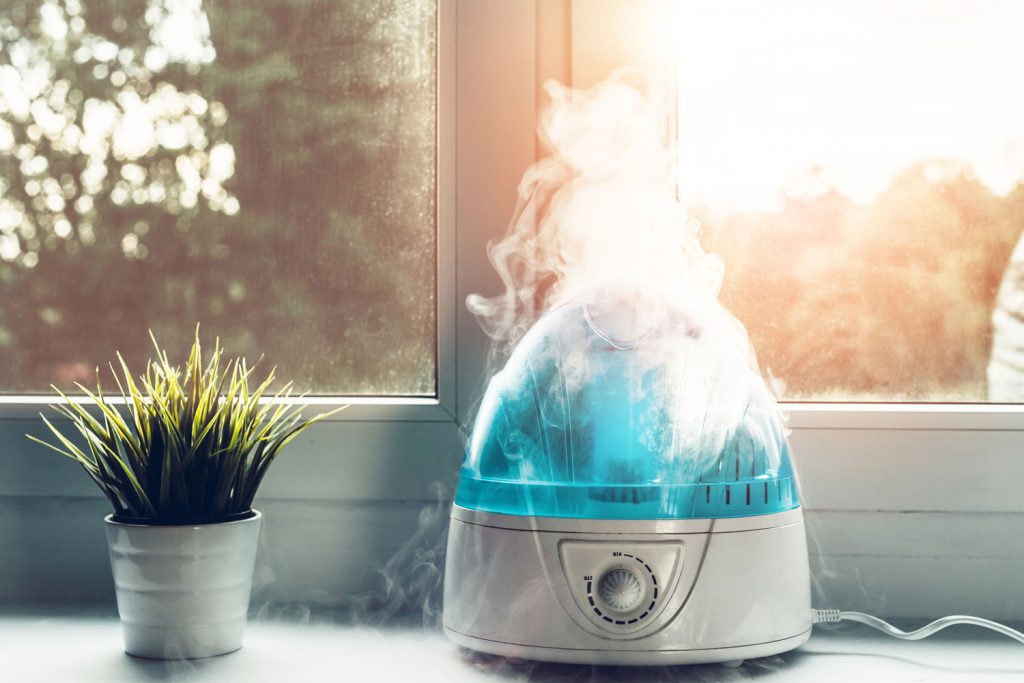
When you're deciding just where to put your humidifier, there are a few things to keep in mind:
- While it's not very common, a humidifier can always end up leaking. Don't put it on a surface that's sensitive to water damage. Or at least put a drip tray or other protective cover in between.
- Humidifiers release moisture into the air - sometimes too much. Don't set the humidifier next to sensitive things that can't tolerate getting damp. Avoid wood, electronics, paper, etc.
- Put the humidifier someplace with adequate airflow. If it's stuck in a tight corner or closeted off, you might find that all the moisture is trapped. You want it somewhere with air movement.
- You want to provide moisture throughout the entire room. This is easiest if you put the humidifier somewhere near the center. Against a wall, the damp air might not be able to travel through the entire room. If you can't put it in a central spot, it's even more important to ensure the room has good air circulation.
- Ideally, the humidifier should be elevated. Some humidifiers release too much condensation. If they're on the floor, the surface will be wet and slippery. Plus, the moisture is released more evenly in the center by being closer to the ceiling, where it can mix with the air.
- Some humidifiers release hot steam. Use common sense when placing this kind of humidifier. For example, don't put it in a walkway where someone might trip over it. Always keep the humidifier out of the reach of pets or small children.
- Don't put the humidifier near a thermostat. It can give false readings.
- Do not put the humidifier in direct sunlight. That can cause algae to grow in the tank.
In Conclusion
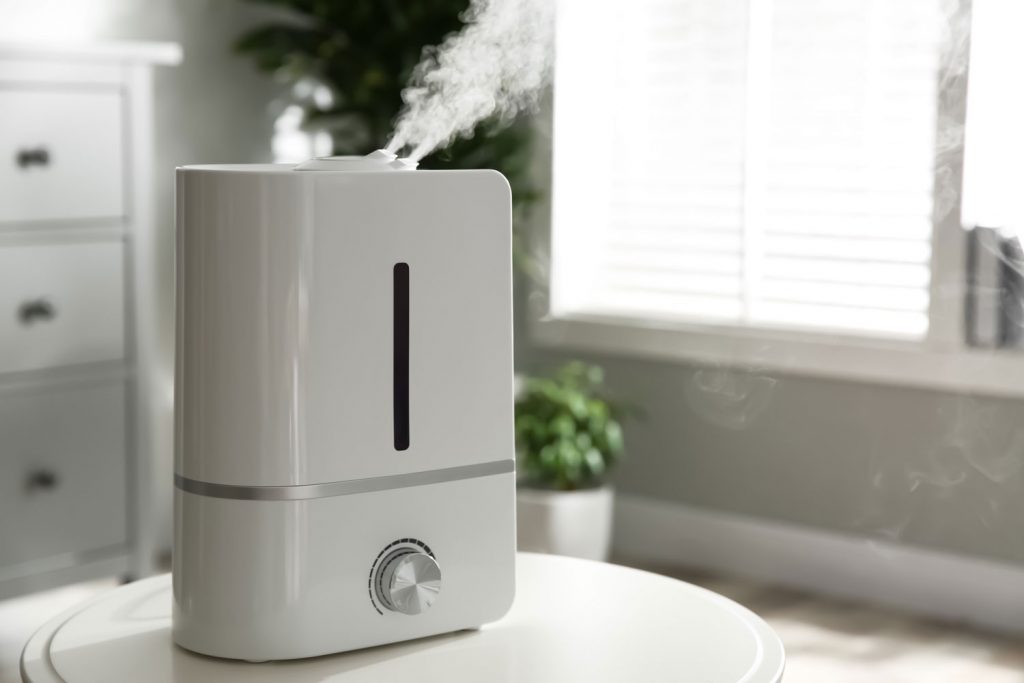
You can use a fan to help circulate the moisture provided by a humidifier. There's nothing to stop you from using a fan and a humidifier together. Sometimes a fan is necessary to get the ideal airflow. However, the fan's movement will evaporate some of the moisture that the humidifier is working to generate.
If you don't need the fan, turn it off. Otherwise, your humidifier is stuck working harder to make up the difference. It's a waste of electricity and your money, really, more than anything. So just avoid running more appliances than you need unless they're serving a real purpose.
If you enjoyed this article, try:
Does a Furnace Fan Reduce Humidity?
Do All Furnaces Have Humidifiers [And Do They Work]?





